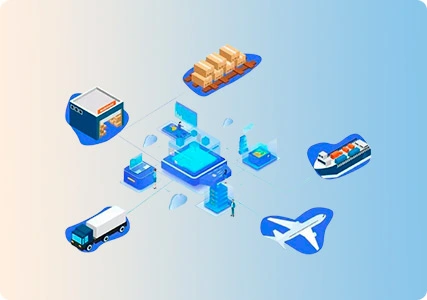
Many consumers and retailers are familiar with parcel shipping as it is the most common type of shipping. Parcel shipping involves moving one or a few packages through ground or air transportation using companies such as UPS, FedEx, DHL, or USPS. Typically, the parcels that are eligible for this service weigh less than 150 lbs, or–more likely–less than 70 lbs, and are below the size restrictions of the parcel carrier handling it.
Differences Between Parcel And Freight
Since parcel shipping deals with the movement of individual packages, this service is often more flexible and their delivery more precise than freight. A big difference between parcel and freight is a parcel delivery driver’s ability to expedite the delivery of packages by taking on an additional one or more parcels on their truck. Since freight deals with massive quantities of packages, a single extra pallet can limit the space in a truck or container, delaying others for multiple days at a time.
Parcel Specification
As we discussed in last week's post, the routine nature of parcel shipments means there are limits to how big the packages you send can be. These limits are:
USPS will let you ship items up to 70 pounds or 31.75 kg.
FedEx will let you ship items up to 150 pounds or 68 kg.
UPS will let you ship items up to 150 pounds or 68 kg.
DHL will let you ship items up to 154.3 pounds or 70 kg.
Anything beyond that has to be shipped via freight. There’s just no way around it. This is a necessity because carriers have limited space on their trucks, a finite amount of fuel, and they need special equipment to move gigantic packages!
Advantages of international parcel
Simplicity: It is convenient to store international parcels, and the method of calculating and charging is unified globally. The first weight and continuous weight are not calculated, which greatly simplifies freight accounting and cost control.
Globalization: International parcels can deliver products to customers in almost any country or region in the world, as long as there is a post office, it can be reached, which greatly expands the bird's nest.
When to Use Parcel
Parcel shipping is the best choice if your packages are closer to the end of the supply chain or are shipped directly to consumers. However, determining whether to use parcel or freight can be unclear, especially for packages that weigh between 70 and 150 pounds. In such cases, shipment volume and destination may be the deciding factors. If you frequently ship small LTL loads with freight, it might be worth considering your parcel shipping options, especially if your packages are on the smaller side.
Best Parcel shipping Assistant
Relying on the concept of cloud logistics, eTower has achieved platform-level integration with hundreds of national postal, express, freight forwarders, local/overseas transport, customs clearance integration, cross-border eCommerce ERP eCommerce platforms and other cloud logistics system to make digital logistics possible. The eTower ecosystem has perfectly realized the integration of logistics order management system, Parcel Fulfillment System, international parcel service tracking, logistics monitoring service, logistics support system, cross-docking management system and in one-stop system service to achieve ecological empowerment.
If you want to know more information and other applications, welcome to contact us, please visit our website at https://www.etowertech.com/ . We will be happy to help you out!










